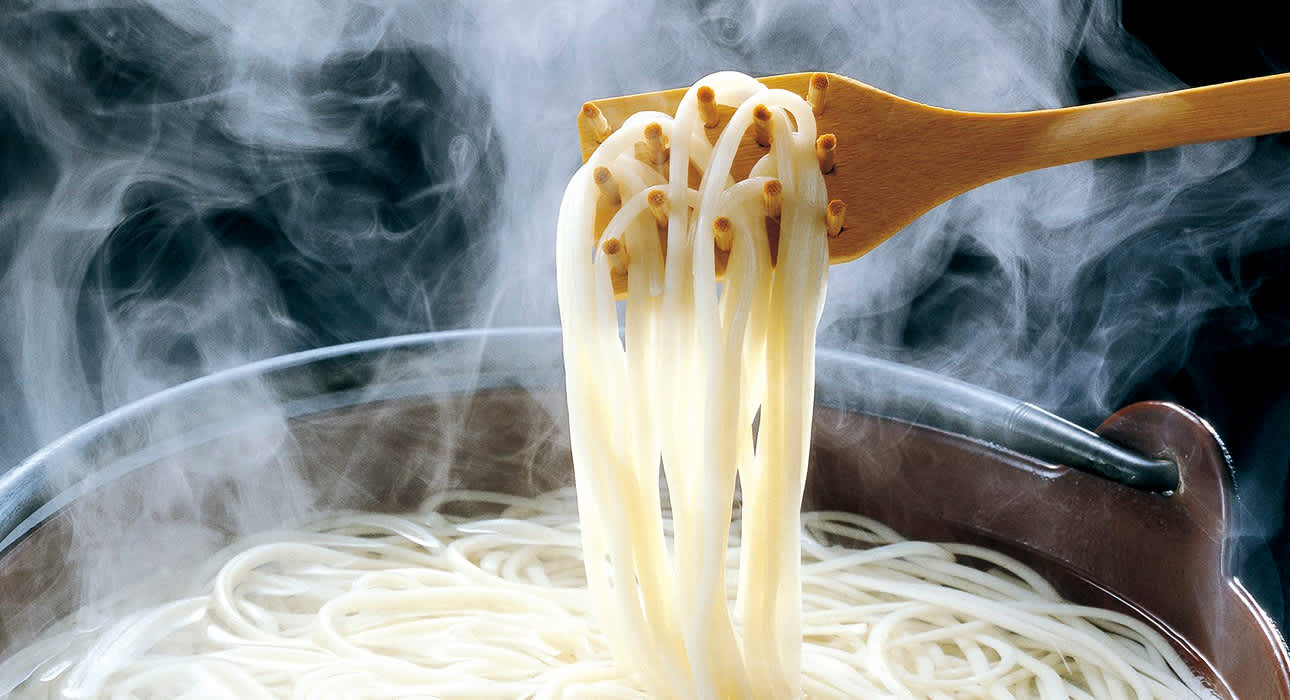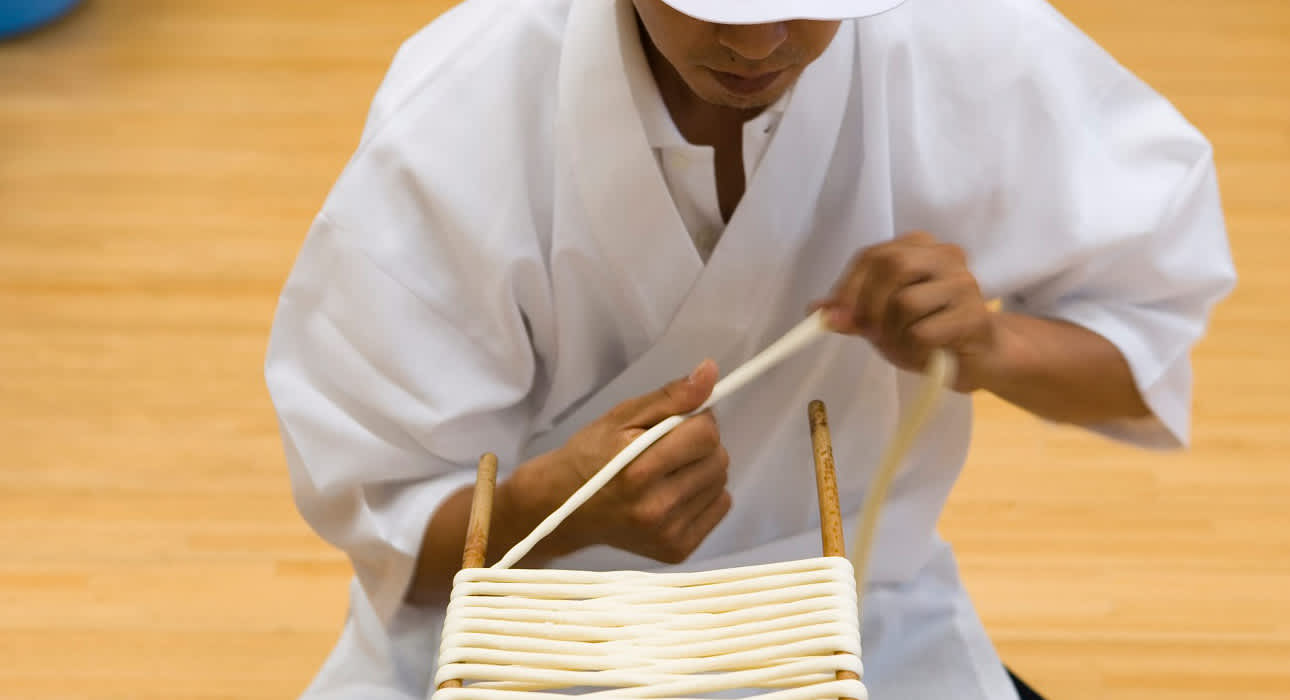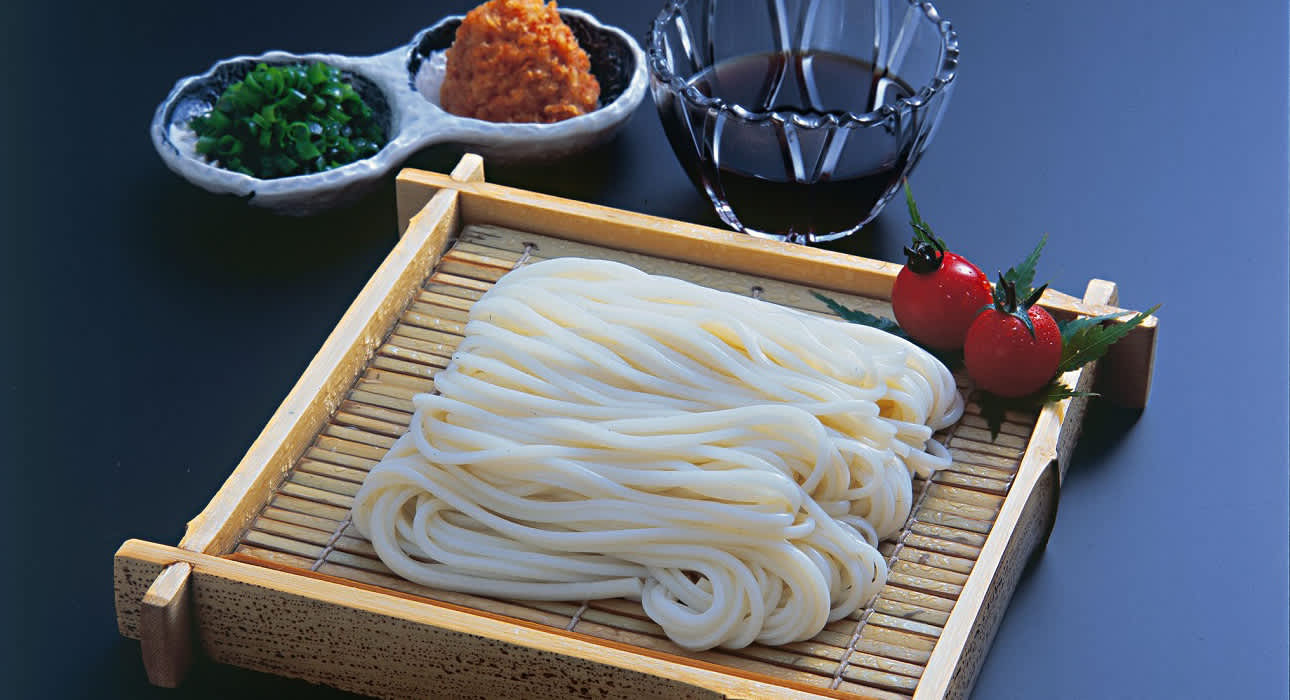
Story Smooth, chewy and handmade udon, these are the roots of Japan’s udon culture By JNTO on 01 August 2017



Off the western coast of Nagasaki, the Goto Islands seem to be floating in the East China Sea. They preserve a tradition that has been handed down since time immemorial, that of “Goto handmade udon”. Because of the time-consuming process needed for the preparation of these special noodles, production is small enough to have once earned them the name “phantom udon”! Made of wheat, salt from the islands’ sea, water and camellia oil, also a product of the Goto Islands, they are a simple dish but with a profound and subtle taste. To make them, the wheat is kneaded and left to rest and ripen. After that, it’s smeared with camellia oil, then hand-rolled, then stepped on and then left to rest again, smeared with oil again and so on for several times until they are ready to reach your plate. Since it contains a lot of anti-oxidant oleic acid, camellia oil is very good for making udon. A perfect match for the Goto handmade udon is the “tsuyu” (dipping broth) made from “ago” (flying fish) grilled and dried on coals, but since they are much thinner than the usual udon, you can enjoy them in several dishes, as stuffing in squid, or as Western style pasta – the variations are endless.
The prevailing theory is that having being brought in from China, Goto udon are the ancestors of Japan’s udon. You should not miss the chance to try them and discover Japan udon’s roots!
Goto Islands Handmade Udon
- Address
- not available
- Website
- http://www.goto-tenobeudon.jp/
- Phone
- not available
















































